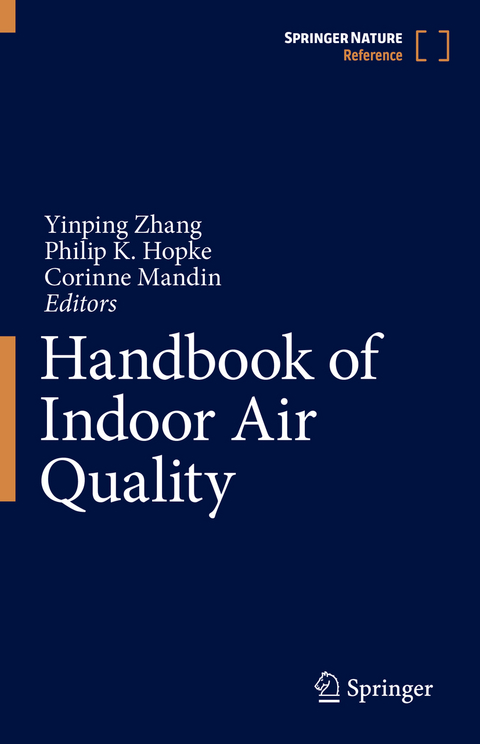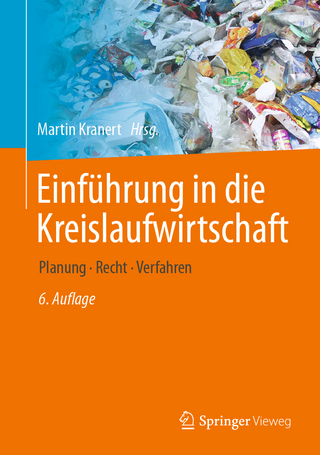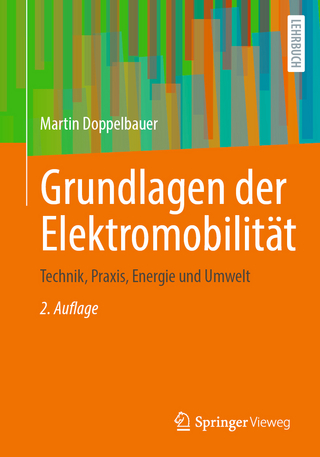
Handbook of Indoor Air Quality
Springer Verlag, Singapore
978-981-16-7679-6 (ISBN)
A group of experts in IAQ research have been recruited to write the chapters. Their research interests and experience cover the scope of the book. In addition, some experienced experts in IAQ field have been invited as advisors or reviewers to give their comments, suggestions and revisions on the handbook framework and the chapter details. Their contribution guarantees the quality of the book. We are very grateful to them. Last but not least, we express our heartfelt thanks to Prof. Spengler, Harvard University, for writing the foreword of the current Handbook of Indoor Air Quality both as a pioneer scientist who contributed greatly to indoor air science and as an Editor-in-chief of Handbook of Indoor Air Quality 2001, 1st ed. New York: McGraw-Hill.
In addition to hard copies, the book is also published online and will be updated by the authors as needed to keep it aligned with current knowledge. These salient features can make the handbook fresh with the research development.
Yinping Zhang, Ph.D, is a professor in the Institute of Built Environment, Tsinghua University, Beijing, China. He is chairman of the Association of Indoor Environment and Health of China, director of the Beijing Key Laboratory of Indoor Air Quality (IAQ), head of the Building Environment Test Center, Tsinghua University, and president of the Academy of Fellows of the International Society of Indoor Air Quality and Climate (ISIAQ). Zhang received his Bachelor (1985), Master (1988) and Ph.D degrees (1991) from the University of Science and Technology of China (USTC). He has been a visiting scholar or professor in Stuttgart University, Germany (1994.5-95.5), Tokyo University, Japan (1996.10-12), and the Technical University of Denmark (DTU) (2004.10-12) and the Otto Mønsted visiting professor at DTU, Denmark (2007/2008, 3 months). His principal research interests are indoor air quality and building energy efficiency. He has been the PI for over 40 research projects whose budgets were over 10 million $US. He has published more than 10 books or book chapters, and more than 280 papers in international journals. His H index is 64 (Web of Science Core Collection). He is editor-in-chief or a key member of the editorial boards for over 20 Chinese IAQ related standards. He has given over 20 plenary and keynote speeches in International Conferences including four International Conferences of Indoor Air (Copenhagen, Denmark, 2008; Hong Kong, China, 2014; Ghent, Belgium, 2016; Seoul, Korea, 2020). He serves as an associate editor of Energy and Buildings and Carbon Neutrality, and is a member on the editorial boards of Indoor Air, Environmental International, Sustainable Cities and Society. He received the 1st Prize from the Natural Science Ministry of Education of China (2010), the 1st Prize from the Science and Technology Development Ministry of Beijing (2020), and the Inoue Uichiaward (Japan, 2022). Dr. Philip K. Hopke is the Bayard D. Clarkson Distinguished Professor Emeritus at Clarkson University, and former Director of the Center for Air Resources Engineering and Science (CARES), and former Director of the Institute for a Sustainable Environment (ISE). He is the head of the Aerosol Technologies Lab at Novosibirsk State Technical University and also holds an adjunct professorship in the Department of Public Health Sciences at the University of Rochester School of Medicine and Dentistry. Dr. Hopke is a past Chair of EPA’s Clean Air Scientific Advisory Committee (CASAC), and has served on the EPA Science Advisory Board (SAB). Professor Hopke is a Past President of the American Association for Aerosol Research (AAAR), and was a member of the more than a dozen National Research Council committees. He is a member of the NRC’s Board of Environmental Studies and Toxicology. He is a fellow ofthe International Aerosol Research Assembly, the American Association for the Advancement of Science and the American Association for Aerosol Research. He is an elected member of the International Statistics Institute and was the recipient of the Eastern Analytical Symposium Award in Chemometrics and the Chemometrics in Analytical Chemistry Conference Lifetime Achievement Award. He is also a recipient of the David Sinclair Award of the AAAR. He served as a Jefferson Science Fellow at the U.S. Department of State during the 2008-09 academic year. He has extensive experience in indoor air quality issues including radon and radon decay product behavior, indoor atmospheric chemistry and secondary particle formation, in-room aerosol dynamics, and cooking and other sources of primary indoor particulate matter. He has been editor-in-chief of Aerosol Science and Technology, an editor of Health Physics, an editor of Atmosphere, Air Quality, and Health, and is currently an editor of Aerosol and Air Quality Research and Chemometrics and Intelligent Systems. He has written 1 book, edited 5, and published over 640 peer-reviewed journal papers. Professor Hopke received his B.S. in Chemistry from Trinity College (Hartford) and his M.A. and Ph.D. degrees in chemistry from Princeton University. After a post-doctoral appointment at M.I.T. and four years as an assistant professor at the State University College at Fredonia, NY, Dr. Hopke joined the University of Illinois at Urbana-Champaign, rising to the rank of professor of environmental chemistry, and subsequently came to Clarkson in 1989 as the first Robert A. Plane Professor with a principal appointment in the Department of Chemistry. He moved his principal appointment to the Department of Chemical and Biomolecular Engineering in 2000. In 2002, he became the Clarkson Professor and Director of CARES. On July 1, 2010, he became Director of ISE that houses Clarkson’s undergraduate and graduate environmental science degree programs as well as managing its sustainability initiatives. In May 2016 he moved to emeritus status. Dr. Corinne Mandin earned her PhD in environmental chemistry from the University of Rennes, France. Previously she received a MSc in organic chemistry from the National School of Chemistry at the University of Montpellier and a MSc from Mines ParisTech in environmental engineering. She has been working on human exposure to chemicals in indoor environments, first at INERIS (French national institute for industrial environment and risks) for 8 years, and now at CSTB (French scientific and technical center for building) that she joined in 2009. She leads the French Indoor Air Quality Observatory, a research program created by the French government in 2001 to carry out nationwide surveys on indoor air quality in buildings. Her research interests include human exposure to volatile and semi-volatile organic compounds, particles and fibers, especially in dwellings, schools and office buildings. She is a member of the “expert committee related to air” at the French Agency for environmental health and she previously chaired the “IAQ guidelines expert committee” from 2009 to 2013. She collaborates with the World Health Organization and the European Joint Research Center. She was involved in several EU research projects (SINPHONIE, OFFICAIR, ALDREN). After having been the Vice-President for Research (2016-2018), she is the President of the International Society for Indoor Air Quality and Climate (ISIAQ) (2020-2022).
1. History and Perspective of Indoor Air Quality Research.- 2. High Volatility Organic Compounds (VVOCs).- 3. Volatile Organic Compounds (VOCs).- 4. Semi Volatile Organic Compounds (SVOCs).- 5. Cooking, Heating Appliances.- 6. Vaping and Secondhand Exposure.- 7. Particles, Including Particles of Ambient Origin.- 8. Aerosol Dynamics for Particles.- 9. Deposition of Particles.- 10. Resuspension of Particles.- 11. Interaction of Gas Phase Pollutants and Particles.- 12. Cooking Aerosol.- 13. Personal Care Products as Sources.- 14. Sampling and Analysis of VVOCs, VOCs in Indoor Air.- 15. Sampling and Analysis of SVOCs in Indoor Environment.
| Erscheinungsdatum | 06.02.2023 |
|---|---|
| Reihe/Serie | Handbook of Indoor Air Quality |
| Zusatzinfo | 329 Illustrations, color; 91 Illustrations, black and white; XLII, 2194 p. 420 illus., 329 illus. in color. In 3 volumes, not available separately. |
| Verlagsort | Singapore |
| Sprache | englisch |
| Maße | 155 x 235 mm |
| Themenwelt | Naturwissenschaften ► Biologie ► Ökologie / Naturschutz |
| Naturwissenschaften ► Geowissenschaften | |
| Technik ► Bauwesen | |
| Technik ► Maschinenbau | |
| Technik ► Umwelttechnik / Biotechnologie | |
| Schlagworte | air quality measurement • Health Risk • indoor air chemistry • indoor air pollutants • pollution transportation and dispersion • source/sink characteristics |
| ISBN-10 | 981-16-7679-8 / 9811676798 |
| ISBN-13 | 978-981-16-7679-6 / 9789811676796 |
| Zustand | Neuware |
| Informationen gemäß Produktsicherheitsverordnung (GPSR) | |
| Haben Sie eine Frage zum Produkt? |
aus dem Bereich


